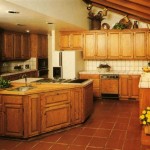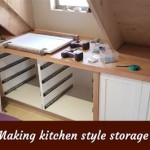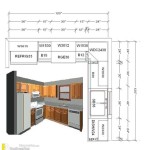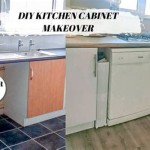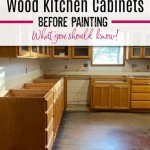Professional Spray Painting Kitchen Cabinets in Surrey, BC: A Comprehensive Guide
Kitchen cabinets are a foundational element of any kitchen space, significantly impacting both functionality and aesthetic appeal. Over time, cabinets can become worn, dated, or simply no longer align with evolving design preferences. While a complete kitchen renovation is a viable option, it often involves considerable expense and disruption. Professional spray painting offers a cost-effective and efficient alternative for transforming existing cabinets, delivering a fresh, updated look without the need for full replacement. For homeowners in Surrey, BC, understanding the nuances of professional spray painting for kitchen cabinets is crucial for achieving optimal results.
This article provides a detailed overview of professional spray painting services for kitchen cabinets in Surrey, BC. It explores the preparation process, paint selection considerations, the spray painting technique, and key factors to consider when choosing a professional service provider. The aim is to empower homeowners with the knowledge necessary to make informed decisions and achieve a beautifully revitalized kitchen.
The Importance of Thorough Preparation
The success of any spray painting project hinges on meticulous preparation. This phase is often more time-consuming than the actual painting process, but it is absolutely essential for ensuring proper adhesion, a smooth finish, and lasting durability. A professional spray painting service will dedicate significant attention to the following preparatory steps:
Cabinet Removal and Hardware Detachment: The first step involves carefully removing all cabinet doors and drawers from their frames. All hardware, including hinges, knobs, pulls, and handles, must be detached. This ensures that the paint can be applied evenly to all surfaces and prevents hardware from being coated with paint.
Cleaning and Degreasing: Kitchen cabinets accumulate grease, grime, and food residue over time. These contaminants can impede paint adhesion and compromise the final finish. Cabinets are thoroughly cleaned with a powerful degreasing solution to remove all traces of dirt and grease. This step often involves scrubbing and multiple cleaning cycles to ensure a completely clean surface.
Sanding and Surface Preparation: Sanding is crucial for creating a textured surface that provides a "tooth" for the paint to adhere to. The level of sanding required depends on the existing finish. Glossy surfaces typically require more aggressive sanding than matte surfaces. A professional will use appropriate sandpaper grits and sanding techniques to effectively prepare the surface without causing damage. After sanding, all dust is meticulously removed to prevent imperfections in the paint finish.
Repairing Imperfections: Any imperfections, such as dents, scratches, or chips, must be addressed before painting. Wood filler or epoxy putty is used to fill these imperfections, creating a smooth and even surface. Once the filler has dried, it is sanded smooth to blend seamlessly with the surrounding area. This step ensures a flawless final finish.
Masking and Protecting: Areas that are not to be painted, such as walls, countertops, flooring, and appliances, are carefully masked off with painter's tape and plastic sheeting. This protects these surfaces from overspray and ensures clean, professional lines.
The preparation phase is arguably the most critical component of the spray painting process. Rushing or skipping steps can compromise the final result and lead to premature peeling, chipping, or uneven paint application. Therefore, entrusting the preparation to experienced professionals is paramount.
Selecting the Right Paint for Durability and Aesthetics
The type of paint used significantly impacts the durability, appearance, and longevity of the finished cabinets. Choosing the right paint requires careful consideration of factors such as the cabinet material, the desired sheen, and the level of wear and tear the cabinets will be subjected to. Professional spray painting services typically utilize specialized paints designed for cabinet applications.
Types of Paint:
Acrylic Latex Paint: Acrylic latex paints are a popular choice for kitchen cabinets due to their durability, ease of application, and low VOC (volatile organic compound) content. They offer excellent adhesion, resistance to chipping and scratching, and easy cleanup. Acrylic latex paints are also available in a wide range of colors and sheens.
Alkyd Paint: Alkyd paints, also known as oil-based paints, offer exceptional durability and a hard, smooth finish. They are more resistant to chipping and scratching than acrylic latex paints, making them a good choice for high-traffic areas. However, alkyd paints have a higher VOC content and require mineral spirits for cleanup. They also tend to yellow over time, especially in lighter colors.
Conversion Varnish: Conversion varnish is a two-part coating that provides exceptional durability, chemical resistance, and a smooth, furniture-grade finish. It is often used for high-end cabinet applications and is resistant to moisture, grease, and household cleaners. Conversion varnish requires specialized equipment and expertise to apply and typically has a higher cost than other paint options.
Choosing the Right Sheen:
The sheen of the paint refers to the amount of light it reflects. Different sheens offer varying degrees of durability and aesthetic appeal. Common paint sheens for kitchen cabinets include:
Matte: Matte sheens have a low reflectivity and provide a soft, velvety finish. They are good at hiding imperfections but are less durable and harder to clean than higher-sheen paints.
Eggshell: Eggshell sheens have a slightly higher reflectivity than matte sheens and offer a balance between durability and aesthetics. They are easier to clean than matte sheens and provide a subtle sheen that is pleasing to the eye.
Satin: Satin sheens have a moderate reflectivity and are more durable and easier to clean than eggshell sheens. They are a popular choice for kitchen cabinets due to their balance of durability and aesthetics.
Semi-Gloss: Semi-gloss sheens have a high reflectivity and are very durable and easy to clean. They are a good choice for areas that are subject to frequent moisture and cleaning, such as around the sink and stove.
Gloss: Gloss sheens have the highest reflectivity and are extremely durable and easy to clean. However, they can be too shiny for some tastes and can highlight imperfections in the surface. They are less commonly used for kitchen cabinets.
Selecting the appropriate paint type and sheen is critical for achieving the desired aesthetic and ensuring the longevity of the finished cabinets. A professional spray painting service will be able to advise on the best paint choices based on the specific needs and preferences of the homeowner.
The Spray Painting Process: Techniques and Equipment
Spray painting offers several advantages over traditional brush or roller application. It provides a smooth, even finish, eliminates brush strokes, and allows for efficient coverage of intricate details and hard-to-reach areas. Professional spray painting services utilize specialized equipment and techniques to achieve optimal results.
Equipment:
Airless Sprayers: Airless sprayers use high pressure to atomize the paint and propel it onto the surface. They provide excellent coverage and a smooth, even finish. Airless sprayers are commonly used for large-scale projects and can handle a wide range of paint types.
HVLP (High Volume, Low Pressure) Sprayers: HVLP sprayers use a high volume of air at low pressure to atomize the paint. They produce less overspray than airless sprayers and are ideal for smaller projects and detailed work. HVLP sprayers are often used for fine finishing and achieving a furniture-grade finish.
Techniques:
Proper Spray Gun Setup: The spray gun must be properly adjusted to ensure optimal paint flow and atomization. This includes adjusting the pressure, nozzle size, and spray pattern. A professional will have the expertise to fine-tune the spray gun to achieve the desired finish.
Consistent Spraying Technique: Maintaining a consistent distance and speed while spraying is crucial for achieving an even coat of paint. The spray gun should be held perpendicular to the surface and moved in smooth, overlapping strokes. Avoiding arcing or uneven movement is essential for preventing runs and sags.
Multiple Thin Coats: Applying multiple thin coats of paint is better than applying one thick coat. Thin coats allow the paint to dry properly and prevent runs and sags. Multiple coats also provide better coverage and durability.
Proper Drying Time: Allowing sufficient drying time between coats is essential for ensuring proper adhesion and a durable finish. The drying time will vary depending on the type of paint and the ambient temperature and humidity. A professional will follow the manufacturer's recommendations for drying time.
Dust Control: Controlling dust during the spray painting process is crucial for preventing imperfections in the finish. Enclosing the work area with plastic sheeting and using a dust extraction system can help minimize dust contamination. A professional will take necessary precautions to ensure a clean and dust-free environment.
The spray painting process requires specialized equipment, technical expertise, and attention to detail. Entrusting this task to experienced professionals will ensure a smooth, even finish, optimal durability, and a beautifully revitalized kitchen.

Cabinet Painting Refinishing Services Langley Surrey Bc Certapro Painters

Cabinet Painting And Refinishing Even Better Eb

Kitchen Cabinet Refinishing Painting

Cabinet Painting And Refinishing Warline Ltd

Kitchen Cabinet Painters In Surrey Ultimate Décor

Kitchen Cabinet Painters In Surrey Ultimate Décor

Kitchen Cabinet Painting In Surrey Painters

Kitchen Cabinet Painting Surrey Bc Refacing Staining Refinishing

Kitchen Spray Painting Upvc Painters

Kitchen Cabinets Painting Vancouver Bc Best Interior

